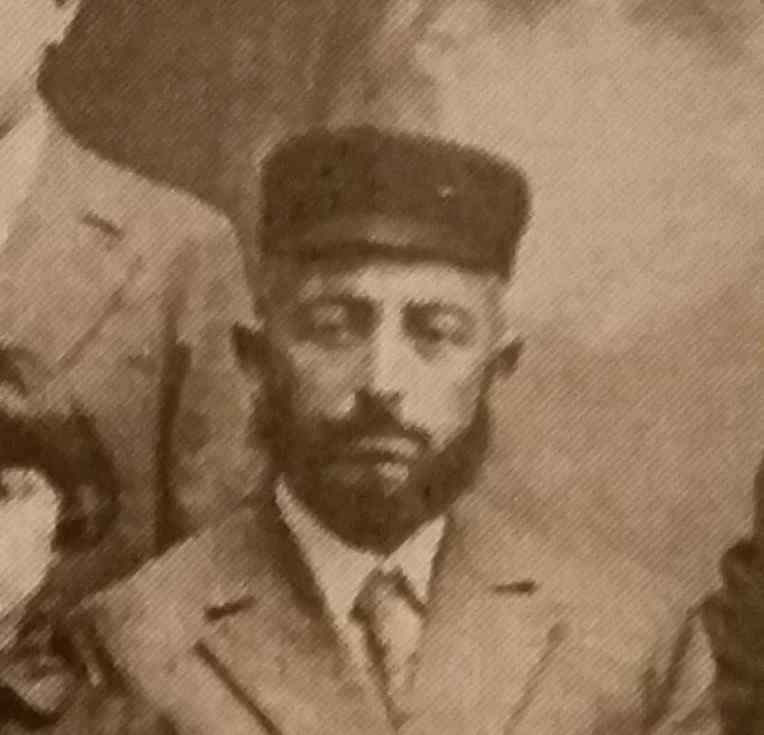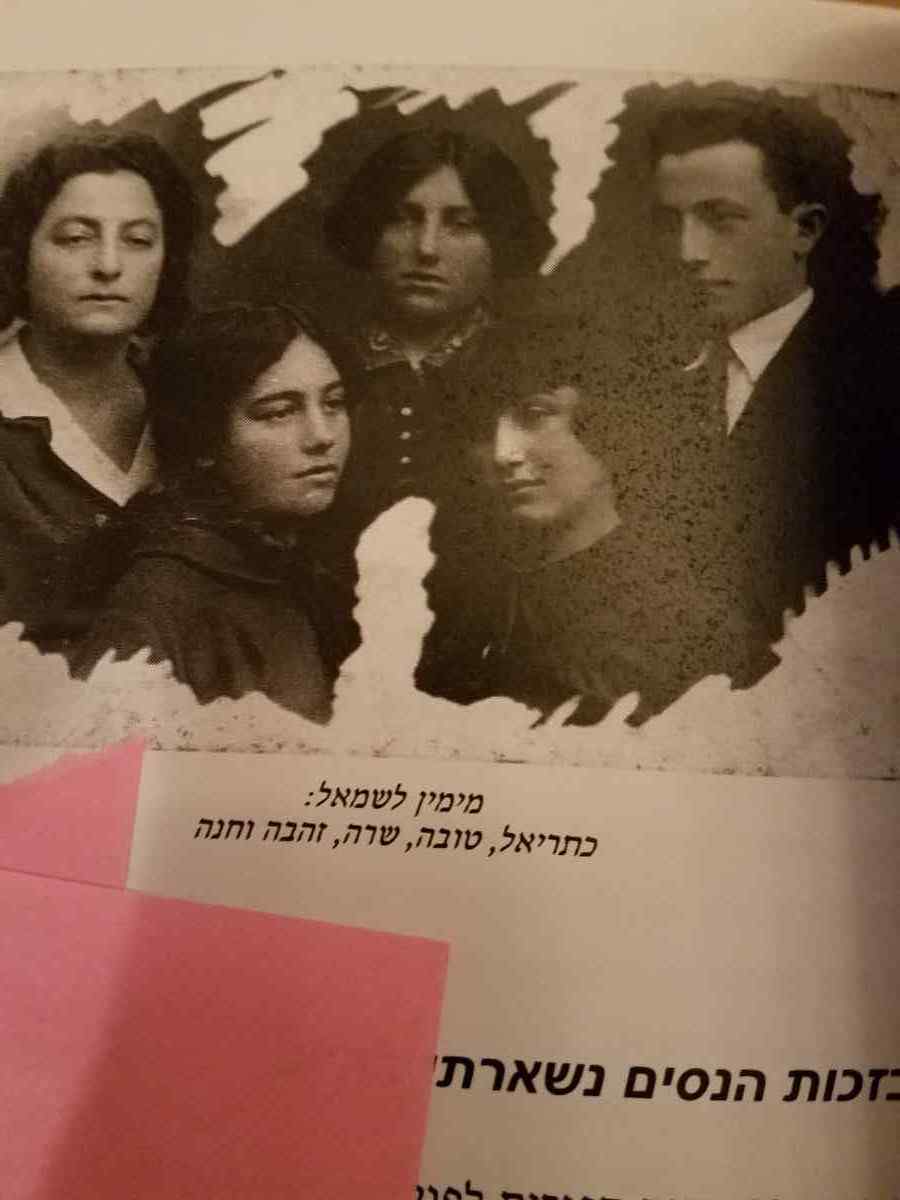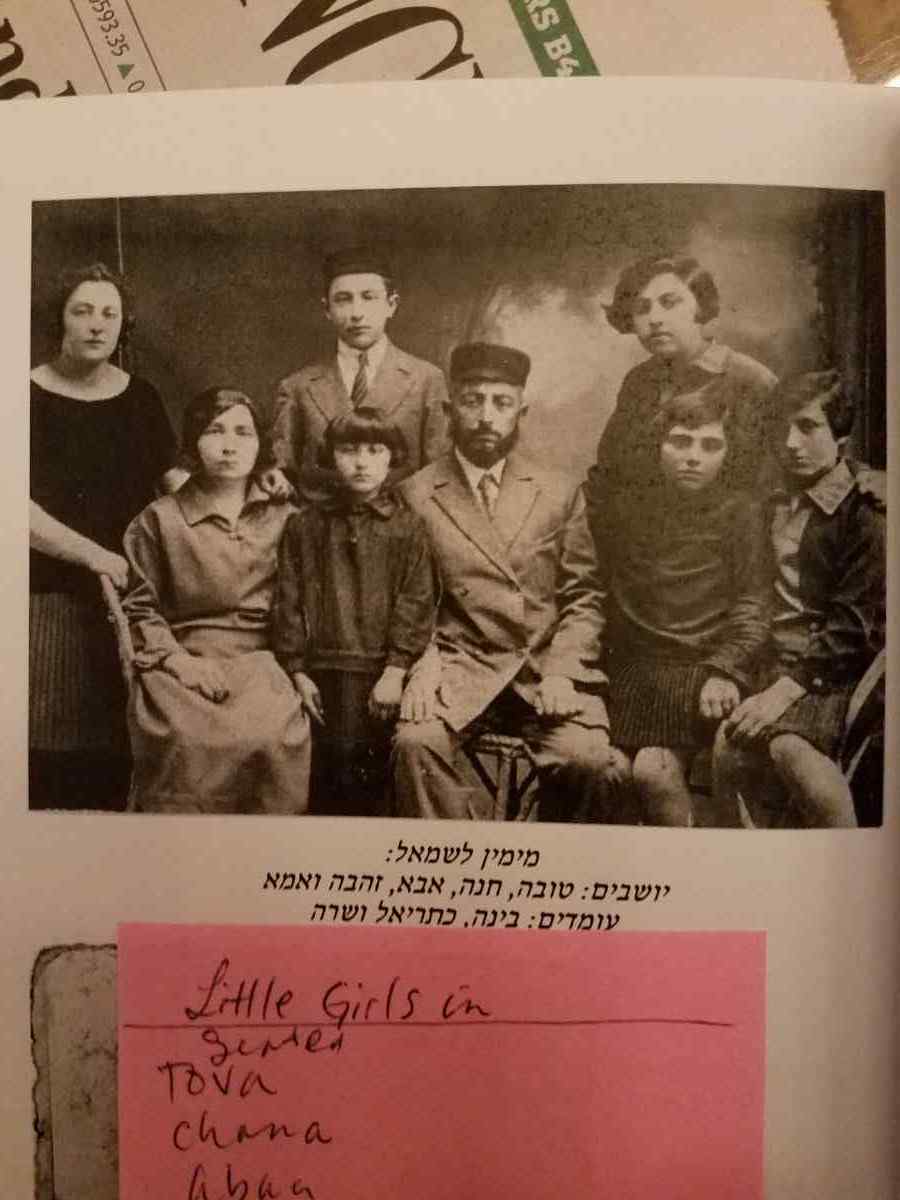
Meyer Yehuda Rowinski
SelectRelation to Private ResetThe selected persons are not blood related.Meyer Yehuda Rowinski, the brother of
Sam (Abram) Goodman (Rowinski), the father of
Louis Harold Goodman, the husband of
Margie Sylvia Evensky Goodman, the daughter of
Julius L. Evensky, the brother of
Milton Sachs Evensky, the father of Private, the parent of Private
- Parents: Froim Boruch Efraim Rowinski Geila Hela Finkiel Faskiewicz Faskowitz
- Siblings: Sam (Abram) Goodman (Rowinski) Chawa Chana Cyrla Ruwinska Arie Lejb Rowinski
- Spouses: Branja Miller Rowinski
- Children: Golde Zahava Rowinski Rowinska Bina Rowinski Zeitel Channa Rowinski Tova Rowinski Catriel Rowinski Sarah Rowinski Etka Anita Rowinska
- Gender: male
- Birthplace: Jadow, Poland
- Deathplace: Treblinka


Communities in Poland, Volume VII
(Kosow Lacki, Poland)
52°36' / 22°09'
Translation of “Kosow” chapter from
Published by Yad Vashem
Published in Jerusalem
(Pages 474-475)
(Sokolow Podlaski District, Lublin Province)
| Year | Population | Jews |
| 1827 | 315 | 315 |
| 1857 | 808 | 786 |
| 1897 | 1,295 | 1,258 |
| 1921 | 1,362 | 1,316 |
Written by Avraham Klevan
Translation from Hebrew and additional notes by
Adv. Meir Garbarz Gover (mggover "at" bezeqint.net), Savyon, Israel
There is not enough information about the origin of Jewish settlement in Kosow. Documents of the beginning of the 18th century indicate that this village in ownership of the Kosowski Polish magnate family. In 1778 town privileges were granted by the king Stanislaw Augustus Poniatowski: a permit to hold two weekly market days and four annual fairs.
Upon the third Poland partition in 1795, Kosow moved under Prussia sovereignty. During the years 1807-1815 it became part of the Warsaw princedom and there after until the end of World war I, it was a part of the Congress Poland kingdom. During the WWI years 1915-1918 Kosow was under Austrian German occupation.
In the second half of September 1939 the Soviets conquered Kosow, but after a week they retreated and left the town as per the Molotov – Ribbentrop Pact which was signed between germany and the Soviet Union and divided Poland among the two states. Kosow was released by the Red Army in the summer of 1944.
After the second half of the 18th century Kosow was already inhabited by Jews. The Kosowski magnates believed in Jewish skills to develop the town and encouraged their settlement there. Jews came to Kosow from neighboring villages. In 1827 most all Kosow residents were Jewish (!), and also thereafter the Jews became an overwhelming majority in town. Most Jewish occupations were commerce and crafts: tailors, blacksmiths, shoemakers, tinsmiths, furriers and leather stitchers. By the end of the 19th century and beginning of the 20th century, the Kosow Jews established many workshops which producced shoe and garment products and two tanneries. On the eve of WWI Jews owned 40 wooden buildings in Kosow.
During the period between the two World Wars the Kosow Jews maintained the same occupations.
At the end of the 18th century, a wooden synagogue was erected and a jewish cemetery was sanctified. The first known Rabbi in Kosow was R' Matitiahu Korner who moved later on to Kock [coordinates 51°38' 22°27']. R' Matatiahu was the pupil of “Hachoze Milublin” (“the Lublin Prophet”), R' Simcha Bunem from Przysucha [coordinates 51°22' 20°37'] and R' Menachem Mendel from Kock. The Kosow Rabbi in 1907 was R' Arie Mordechaj Rabinowicz who moved later on to Kurow [Coordinates 52°17' 19°33'] and then moved to Eretz Israel and became the first Rabbi of Bnei Brak. There after R' Abraham Pinchas Liberman became the Kosow Rabbi, and in the period between the two World Ears R' Platiel Jedidia Lubelchik, and R' Jerucham Fiszel Dan served as the Kosow Rabbis. R' Jerucham Fiszel Dan was the last Rabbi of Kosow.
Kosow Jews were known to be observant and orthodox but in the years of 1920s and 1930s the Zionist Movement influence grew in town. “General Zionists”, “Poalei Zion” (Workers of Zion), “HaMizrachi”, and the revisionists were all represented in Kosow, including the youth movements of “Hashomer Hatzair” and “Hanoar Hazioni”. Jewish children got their initial education in the traditional cheder Jewish nursery as well as in the General Elementary Polish School.
Anti-Semitism rose in the 1930s. Polish Anti-Semites members of the Endecja party initiated boycott on Jewish stores and Jewish made crafts and trade. Many Jews went into financial difficulties, shops were closes one by the other and the number of those who needed Jewish benevolent help increased constantly.
During World War II
On September 1939 the Red Army occupied Kosow for a week but had to transfer Kosow to German control under the Molotov-Riebentropp Pact. Once the Germans gained control, Jews were forced into slave labor and Jewish property was confiscated. Among the laborers was Jacob Kokawa a community elder.At the end of 1939 the Germans established a Judenrat and erected and open ghetto. The absence of a Ghetto wall enabled fetching food from nearby farmers. In 1941 Kalisz [coordinates 54°03' 17°48'] deportees arrived at the Kosow Ghetto. A feeding kitchen was erected but hunger, crowdedness and death rate rose. Many Jewish craftsmen were forced to slave labor for the Germans, some were send to erect nearby Treblinka Death Camp [coordinates 5240 2202].
The extermination of Kosow Jewry came on the end of the holiday of Yom Kippur 5703 – 22 September 1942. German and Polish Policemen circled the Kosow Ghetto and moved them the very same day to Treblinka extermination camp.
Many Jews objected and were executed on the spot. Few escaped to nearby forests, most of them were extradited by local Anti Semites Poles back to the Germans. After the liberation of town by the Red Army in the summer of 1944 a few Jewish survivors returned to their own homes in Kosow and some of the survivors were murdered by Kosow Polish residents.
Sources:
Yad Vashem Archives: 03/3304Central Zionist Archive: Z4/3003-IV
Heint – “Today” Jewish newspaper 19.5.1921, 19.7.1921, 10.9.1931, 2.7.1938.
Translator's notes:
Kosow Lacki Jews were a source of slave laborers that build and enlarged Extermination Camp Treblinka, a mere 12km North West of Kosow, from a small Soviet P.O.W.'s camp to a super efficient Death Camp for Jews.During the three days of 22-25 September 1942 the 1,200 Kosow Ghetto residents and refugees were marched by foot on the narrow bent country site road connecting between Kosow Lacki and Treblinka. They were the only Death Transport known to arrive at the gates of Treblinka by foot. All other transports arrived by trains. All of the Kosow Jews were exterminated promptly upon arrival.
The road looks today (August 2003), same as it looked in September 1942. Same birch trees along the road, same wide fields spreading to the horizon, same Mother Marry icons at the entrance to the scarce Polish villages along the road.
If you ever drive on this Polish country forsaken road, on your way to visit Treblinka, stop the car, and walk for a while on this serene narrow black strip road segment that connects the Shtetl of Kosow Lacki directly with Treblinka, and follow the path of the one and only foot Death Transport to Treblinka.
Extra information may be sent or requested by emailing the site administrator.